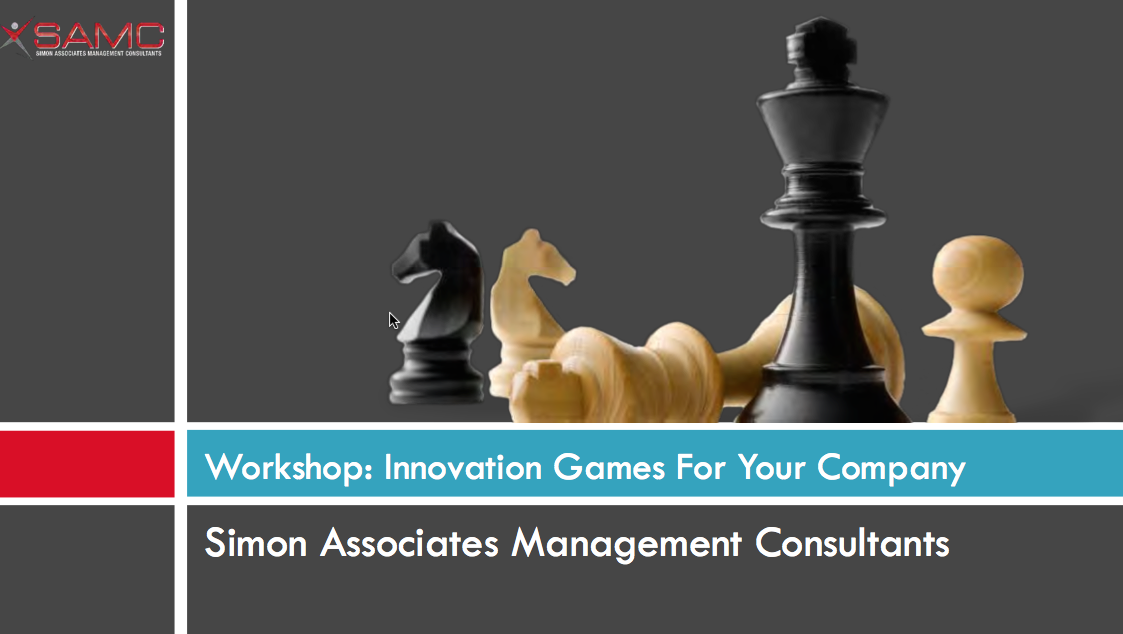As President and Founder of Simon Associates Management Consultants, I have been working as an Innovation Games® consultant with numerous healthcare providers, helping them become more creative and innovative. Inevitably, I am often asked to make this often-arduous change journey easier to implement.
The constant challenge in any change process is to make the undesirable desirable. That means business people have to have a good deal of help, not just hope, to find new ideas and convert them into effective innovations. Furthermore, these cannot be occasional events. They have to become part of the way people do things in an organization.
Here are the 10 things you need to do to build a culture of innovation in your organization—whether it is a healthcare institution or not. To learn more, please click here for our website.
Build a Culture of Innovation
1. The brain hates change. The brain is a wonderful machine that is highly effective and efficient, driven by habits that develop as you mature. But ask the brain to change and it responds, “No way! This is painful.” What to do? The brain can change, but it needs three things to do so: 1) a picture or story about what you want it to do in a new way, 2) a new script to tell that story in new ways, and 3) rehearsal time to learn how to live the new and stop resorting back to old familiar habits.
2. Have a crisis or create one. If things are going fine, why change? Because tomorrow will be different from today, you need to do more than brace yourself for the new business environment in healthcare—you need to create it. On the other hand, if you’re in the middle of a crisis (such as a re-organization), you tend to fall back on what you know. In this case, use the crisis (real or imagined) to build a team that adapts and innovates.
3. Team innovation or “I” innovation? Can teams come up with amazing innovations or only individual creative thinkers? Are innovators only those outliers with weird ideas? No. The thing to remember is that if you ask people to change, you will need: leaders, idea generators, implementers and effective teams to embrace the change. Innovation really is a team sport.
4. Training works. The research on this is quite compelling. Check out this article from MIT/Sloan. While built around the theme of “how to have influence” rather than “innovation,” it is a sound, culture-based approach to influencing people to move in new directions, innovatively.
5. The more ideas you have, the more likely you will have great ones—you just don’t know which ones they are. This isn’t a linear process. Ideas come together at the intersections. Thus, you need to have an idea room or an idea bank to get the juices flowing. To learn more, browse through “The Medici Effect” by Franz Johansson.
6. Where do you find those ideas? Surprisingly, the best places are right around you—namely, employees, customers and your partners. You just need to find a way to listen to their ideas and then organize them into an innovation process where they can be turned into meaningful solutions.
7. Convert ideas into effect innovations. How can you know which ideas are worth developing into testable innovations and which should be scrapped? Solution: create a testing mindset. Develop prototypes and then bring in customers to work on them. Or take an innovation into the marketplace and evaluate its effectiveness.
8. From concept to implementation. Now that you’ve converted a new idea into a tested innovation and gotten positive results, what next? One option is to leave it with the development team. Or you could bridge the gap between development and those who run the rest of the operation. Both can work, but be careful if both groups’ skills are different and don’t transfer.
9. Onto the next big idea. Humans generally celebrate success and then revert back to business as usual. But today’s speed of change requires organizations to have a series of new ideas that can be converted into testable innovations, concurrently not sequentially.
10. Celebrate. Don’t forget to create symbols and rituals that will recognize and reward the people in your organization who have contributed ideas, effort, patience and persistence. People really do like hugs and they love to celebrate. Use these to build the belief that they really can do it.
Remember: There really is a path from pain to change that can help an organization see, feel and think in new ways. All it takes is a willingness to change and determination to see it through.
At Simon Associates Management Consultants, we are trained facilitators and Qualified Trainers in Innovation Games. We find that serious play can open up possibilities that are often right around you—if only you can see them. To learn more, we invite you to watch our workshop:




